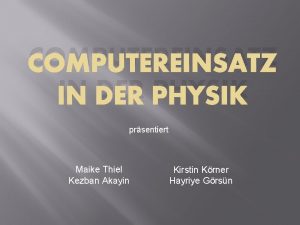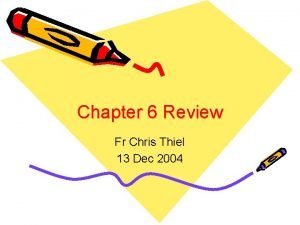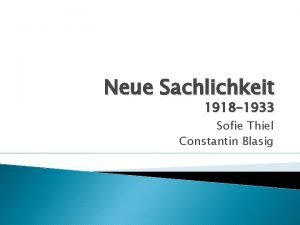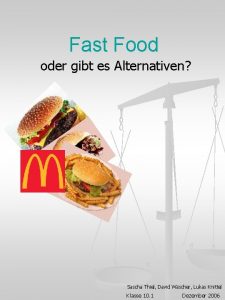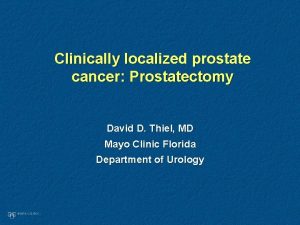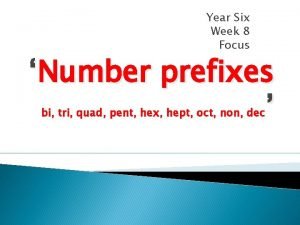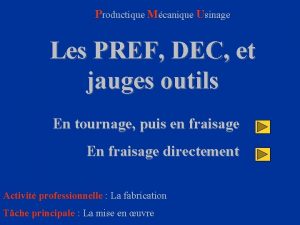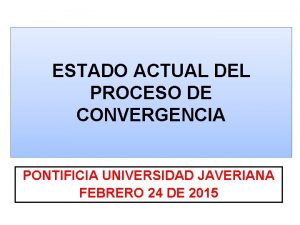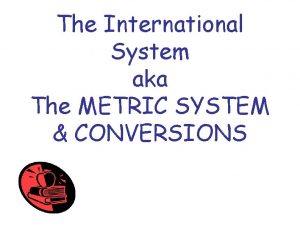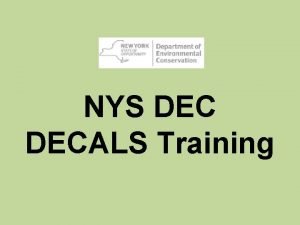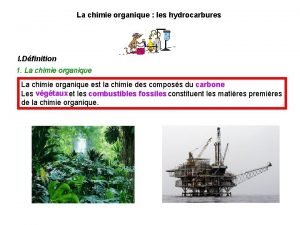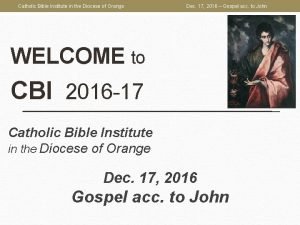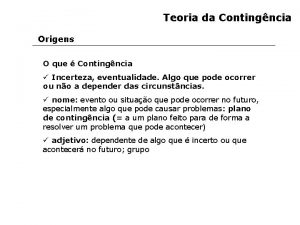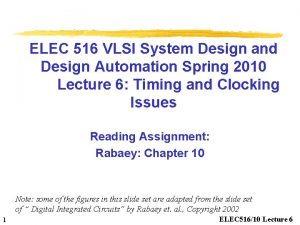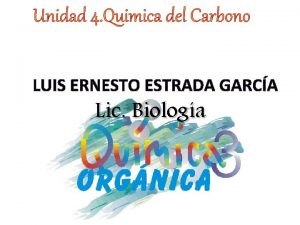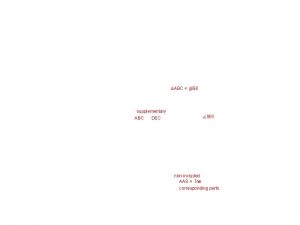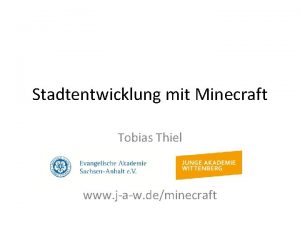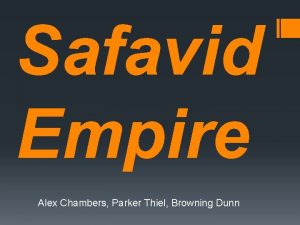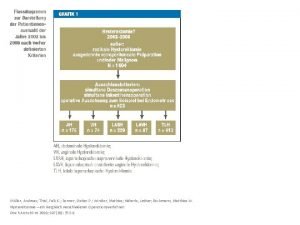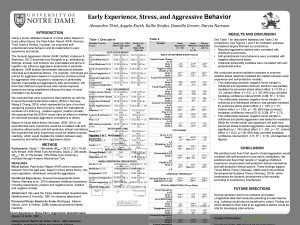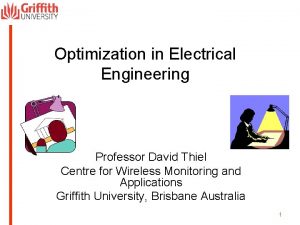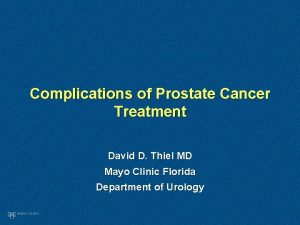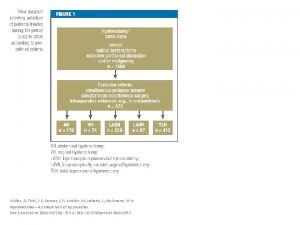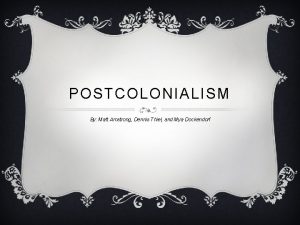Chapter 6 Review Fr Chris Thiel 13 Dec





















- Slides: 21

Chapter 6 Review Fr Chris Thiel 13 Dec 2004

What is true about probability? • The probability of any event must be a number between 0 and 1 inclusive • The sum of all the probabilities of all outcomes in the sample space must be 1 • The probability of an event is the sum of the outcomes in the sample space which make up the event

Independent Previous outcomes do not change probability Multiplication Rule: P(A and B)=P(A)P(B)

Disjoint One outcome precludes the other since there is No overlap…

Complement The event A does not occur

Addition Rules P(A or B)=P(A)+P(B)-P(A and B)

Multiplication Rules P(A and B)=P(A)P(B) if A and B are independent

Conditional Rules

P(65+)=18% P(Widowed)=10% a. If among 65+, 44% widowed, What percent of the population are widows over 65? b. If 8% are widows over 65, What is the chance of being a widow given that they’re over 65? See Table 6. 1 p. 366

Use Venn Diagrams & Trees Venn Diagrams can help see if events are Independent, complementary or disjoint Use Tree Diagrams to Organize addition and Multiplication rules to combinations of events

If event A and B are disjoint, then • P(A and B)= 0 • P(A or B) =1 • P(B)=1 -P(A)

Independent events… you flip a coin and it’s heads 4 times in a row…. The odds are STILL the same

The 6 is 3 times more likely to occur… what is the probability of rolling a 1 or a 6?

A fair die is tossed 4 or 5 -win $1 6 -win $4 If you play twice: what is the probability that you will win $8? $2?

P(A)=. 5 P(B)=. 6 P(A and. B)=. 1 • • • P(A|B)=? Are A and B Independent? Disjoint? Will either A or B always occur? Are A and B complementary?

Lie Detector • Reports “Lie” 10% if person is telling the truth • Reports “Lie” 95% if the person is actually lying • Probability of machine never reporting a lie if 5 truth tellers use it

You enter a lottery, the odds of getting a prize is. 11 If you try 5 times, what is the probability that you will win at least once? • 1 -P(never winning)

8% have a disease. A test detects the disease 96% And falsely indicates the disease 7%. If you test positive, what is the chance you have the disease? P(D|+)

P(Harvard)=40% P(Florida)=50% P(both)=20% P(none)=? P(F but not H)=?

30% of calls result in a airline reservation. a. P(10 calls w/o a reservation)=? b. P(at least 1 out of 10 calls has a reservation)=?

85% fire calls are for medical emergencies Assuming independence… P(exactly one of two calls is for a medical emergency)=? P(M)P(F)+P(F)P(M)=(. 85)(. 15)+(. 15)(. 85)=. 255 Is it really independent?
 Pros and cons of risk financing
Pros and cons of risk financing Maike thiel wikipedia
Maike thiel wikipedia Sofie thiel
Sofie thiel Neue sachlichkeit themen
Neue sachlichkeit themen Peter thiel
Peter thiel Sascha thiel
Sascha thiel David thiel md
David thiel md Personalbeurteilungsverfahren
Personalbeurteilungsverfahren Mono bi tri quad
Mono bi tri quad Pref et dec
Pref et dec Dec. 3022/13
Dec. 3022/13 Base units for metric system
Base units for metric system Nys decals login
Nys decals login 8th dec 2014
8th dec 2014 Ra dec
Ra dec Proppent
Proppent Dec 17
Dec 17 Tos dec.lawler
Tos dec.lawler Dec alpha 21264
Dec alpha 21264 Importancia grupos funcionales
Importancia grupos funcionales Ethyl methyl chart
Ethyl methyl chart Meth eth prop
Meth eth prop

